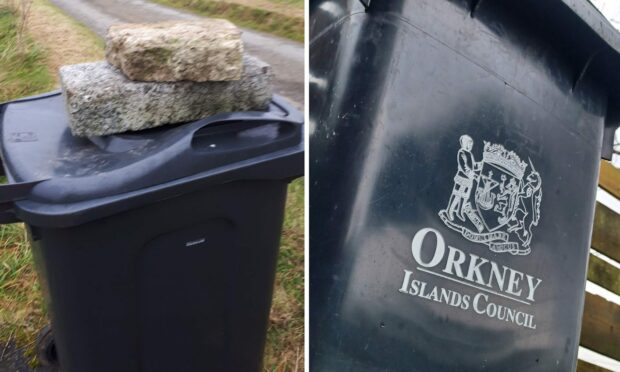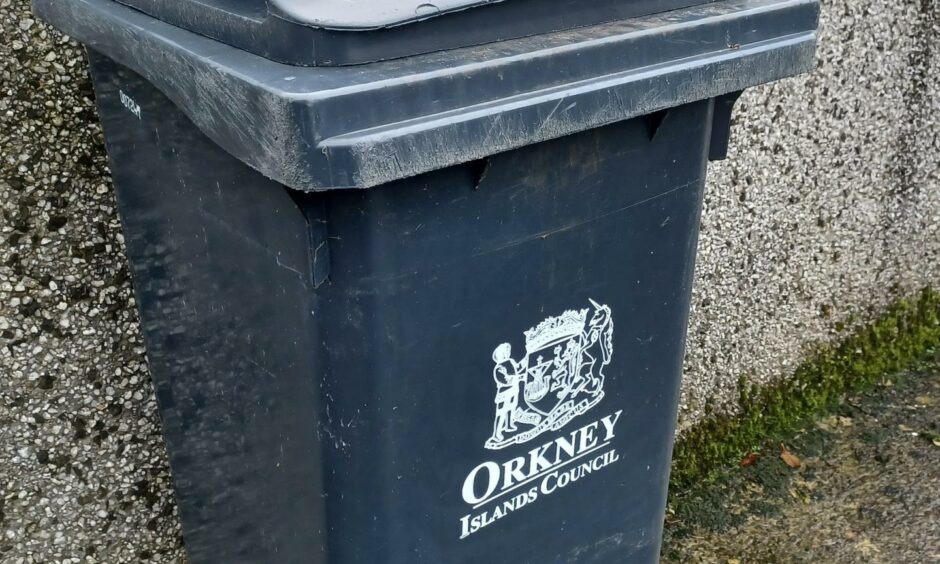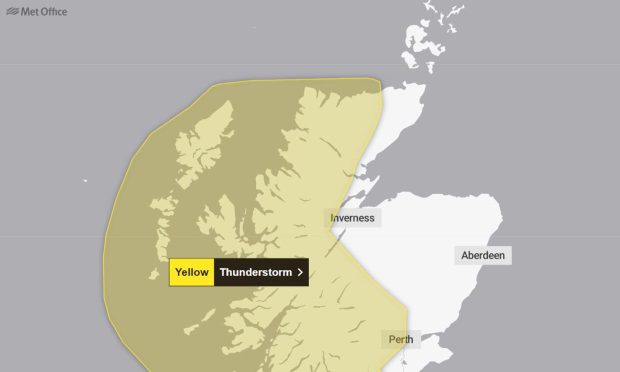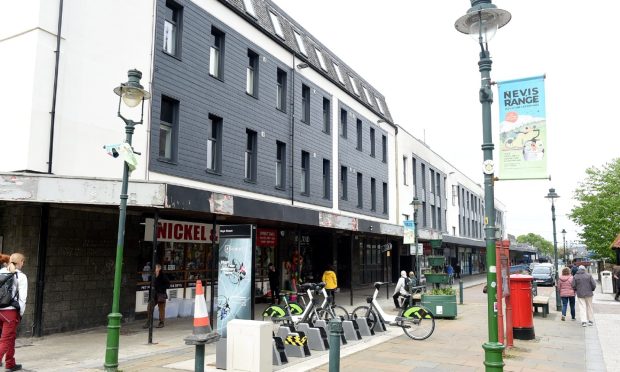Islanders have been told they can put rocks on their rubbish bins to weigh them down on notoriously windy islands – as long as they don’t weigh more than 4.4lbs for fear of injuring the refuse collectors
It follows a huge backlash after the local council banned Orcadians from weighing down their rubbish bins with stones or heavy objects – as they were a danger to collection crews.
4.4lbs is equivalent to five cans of soup, or a big bottle of Heinz Tomato Sauce.
Now, Orkney Islands Council has unveiled two new approved methods for householders to secure down the lids of their wheelie bins – after they passed health and safety tests.
Two approved methods
Council officials in consultation with waste collection staff have been testing out a variety of clips and straps to make sure they don’t interfere with the lifting or handling of the bins themselves.
Two have made the grade:
- One is a plastic clip made by a company called Schafer, available from the council reception priced at £5.50.
- Or device made in Caithness from bungee cord and old creel hooks that are washed ashore on local beaches, available online at the same price.
A council spokeswoman said that the clips were purely optional and anyone successfully using their own solution could continue with that.
The strict set of rules continued by stating that bungee cords and ropes can still be used when storing bins prior to collection, as long as they are removed on bin day.
Hayley Green, the council’s bin guru, said: “We listened to what residents said and in finding a compromise through the revised guidance many more bins were able to be collected – and if you are in that position then there’s no need to do anything further.
“However, if you still need to find a solution to securing your bin lid in windy weather then one of the two tried and tested options are there for folk to purchase.
“If folk opt to go with other lid restraints, then our crews will continue to assess if they are suitable and safe for use, but it may mean your bin can’t be emptied.
“I would like to thank folk for their ongoing patience with this as we know it has been frustrating for many but hopefully, we have found a workable solution for all.”
Calm was somewhat restored recently after the local authority agreed a compromise – islanders would be allowed to place a stone on bin lids in inclement weather — but it must be no more than 4.4lbs in weight.
On bin day -the use of bungee cords to secure bins were banned – due to “facial injuries which have been caused to staff” as they undid the tightly sprung cords.
Orkney Islands Council attracted more than 200 comments on Facebook from angry islanders when it first banned any heavy object being placed on bin lids.
Windy isles
James Stockan, leader of the council, said some binmen were faced with up to two stones at a time being placed on bin lids.
He said then: “We are in the windiest place in the country.”
To illustrate just how “ferocious” the winds could be, Mr Stockan said a windmill that was “25 per cent efficient” in the Home Counties would be “55 per cent” in the Orkney
However, some locals attacked the previous compromise.
Deenesh Revis wrote: “If you have bin men or refuse technicians or whatever you call them who can’t lift more than 2kg off a bin then they aren’t fit for the job. Manual work/lifting is part of that job.”
Stephen Palmer added: “I’m sorry but bricklayers manage to lift hundreds of bricks and heavier blocks daily as part of their job.”
But Emma Grieve wrote: “We use half a brick on our bin that can be removed just by opening the lid, so banning this and having litter strewn over the verges instead seemed excessive.”
The council has even produced a frequently asked questions document after being inundated with more questions after the latest announcement.
It includes queries over using electrical tape to secure the bin lid and ‘can I put my bin hinge side into the wind to prevent the lid blowing open?’












Conversation